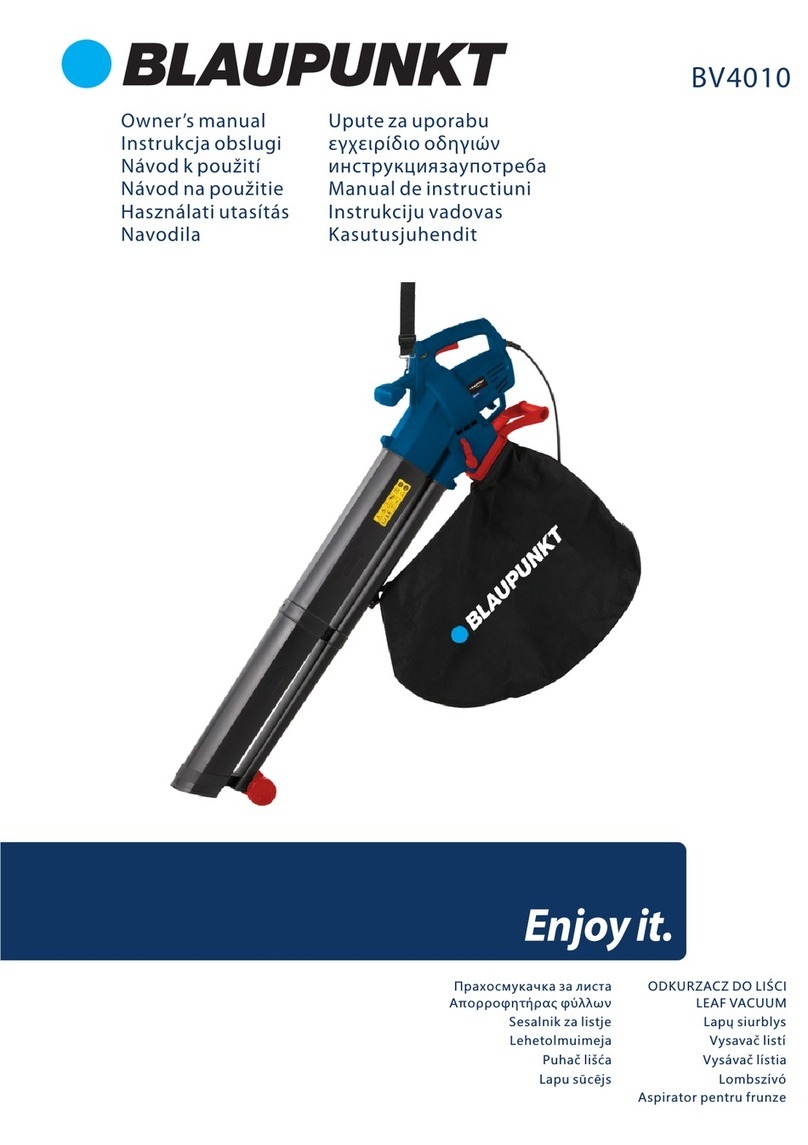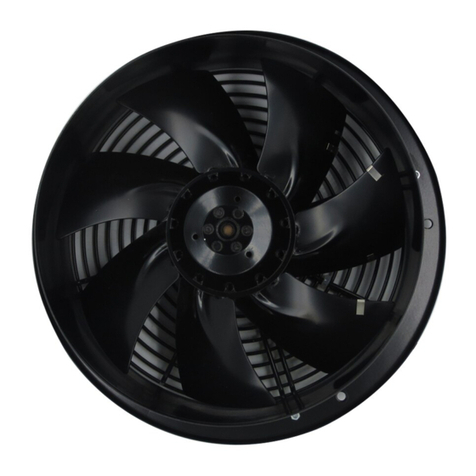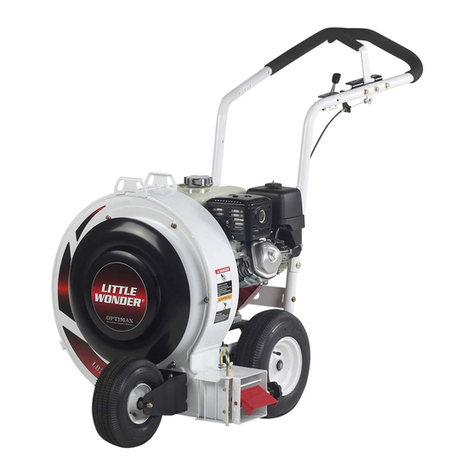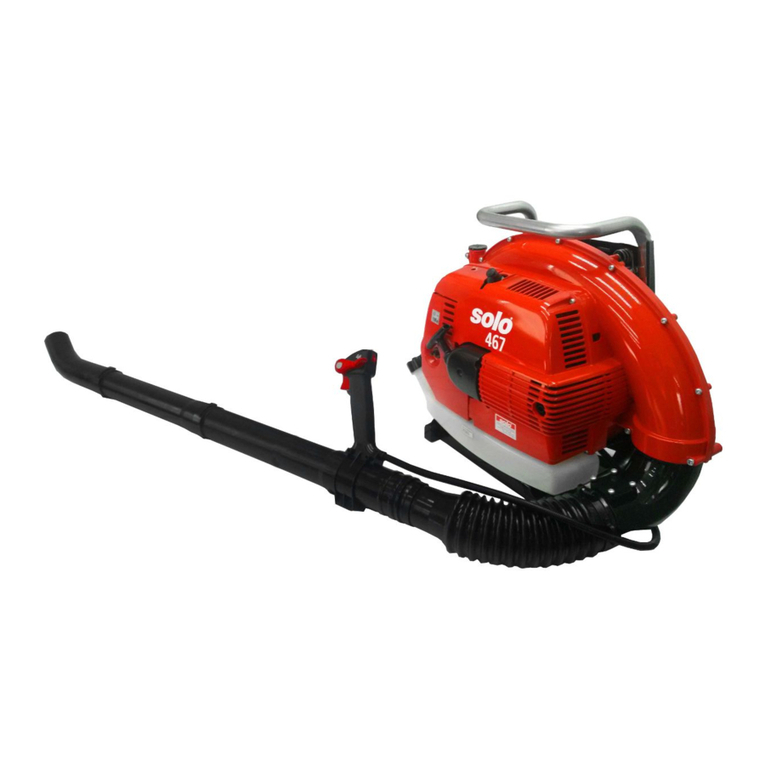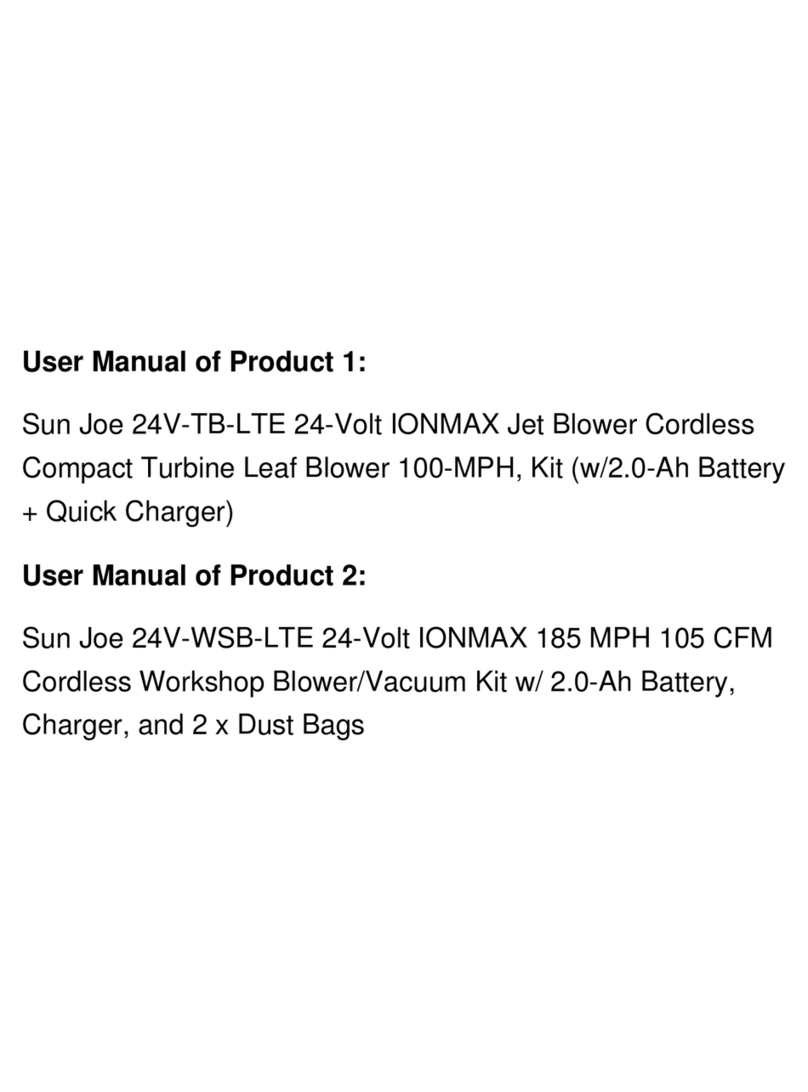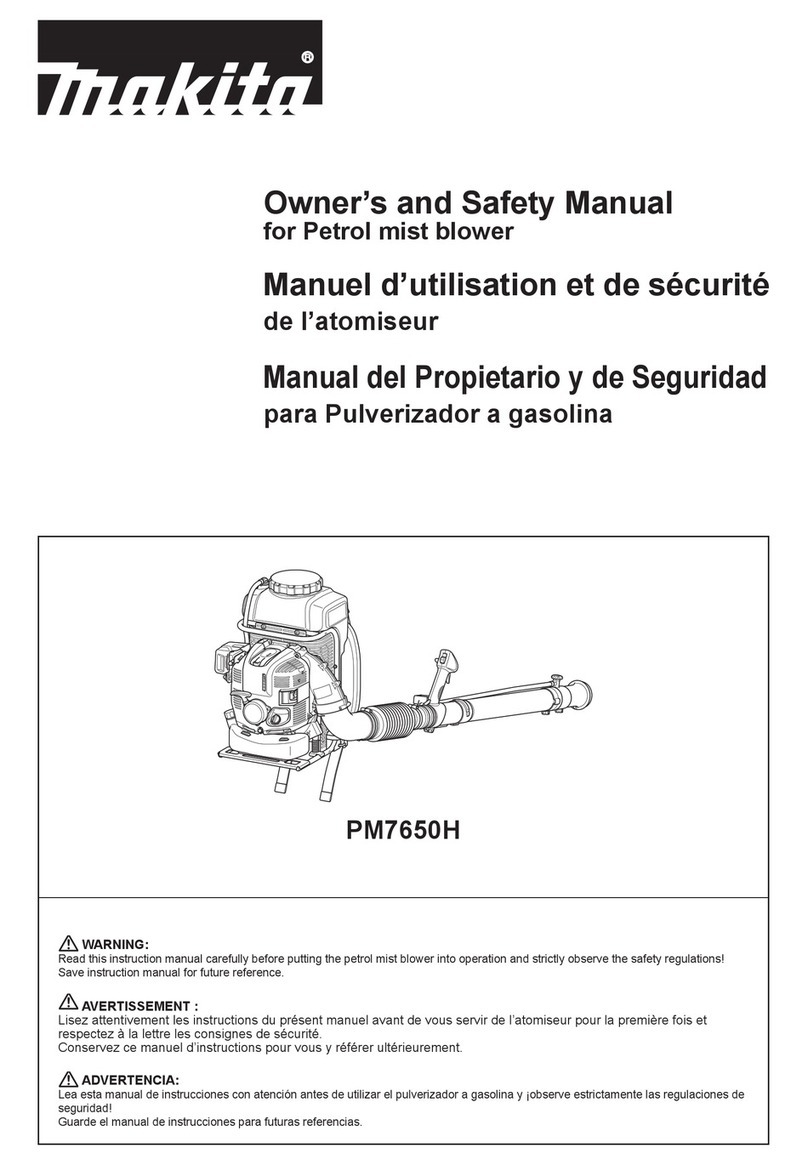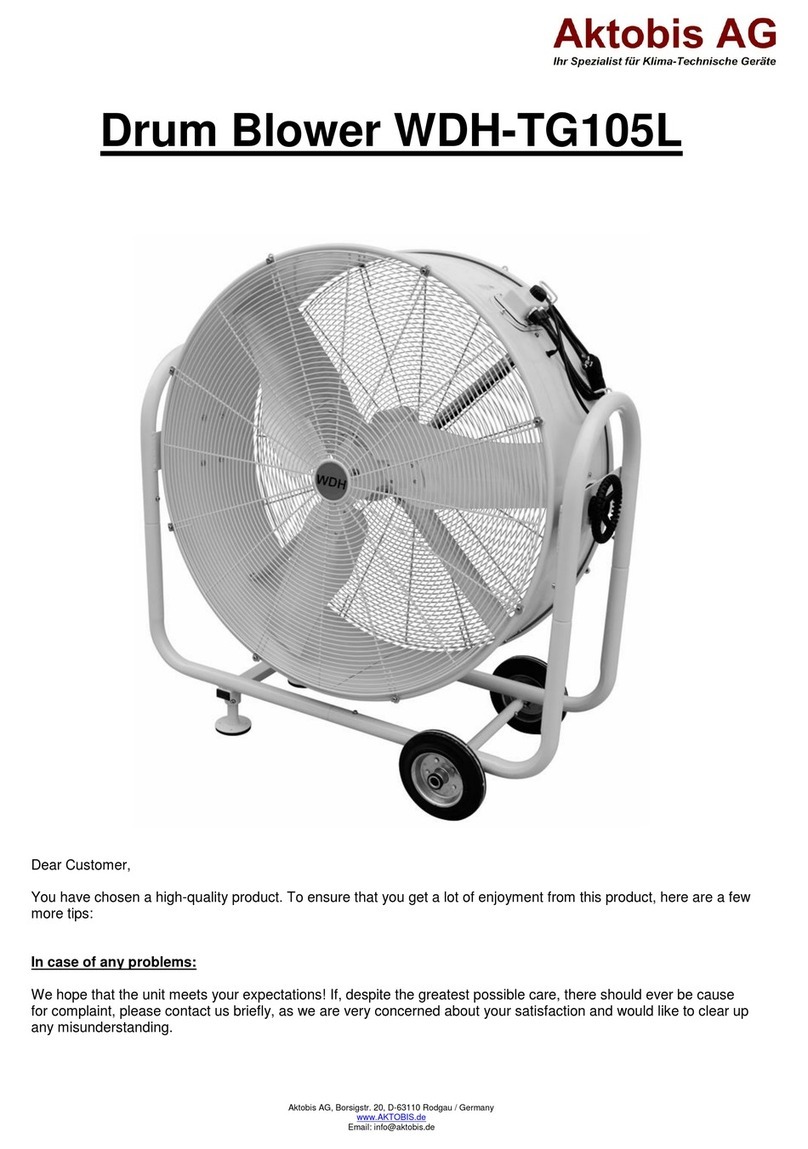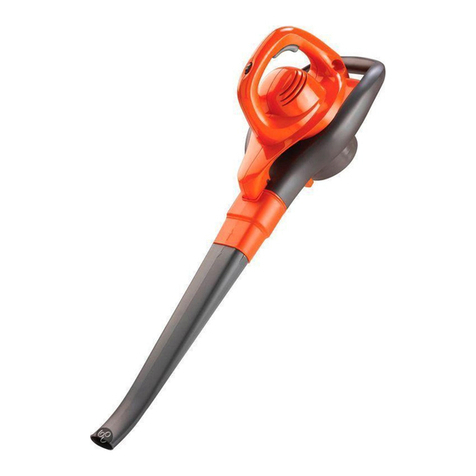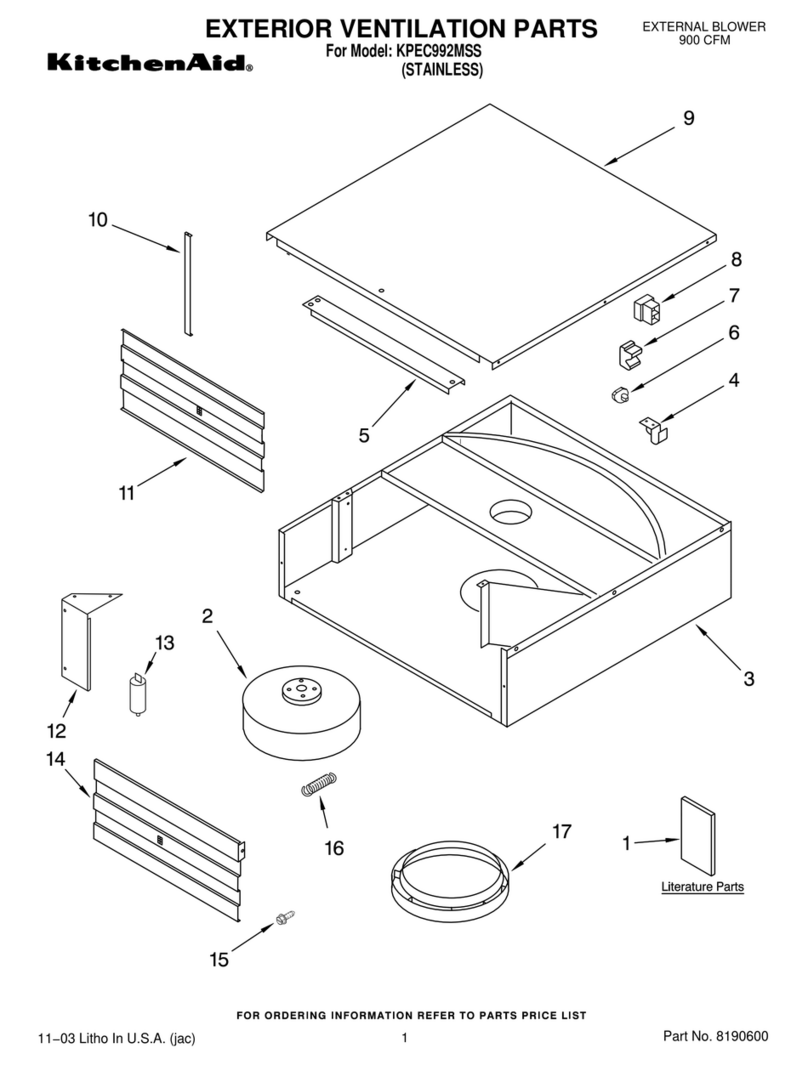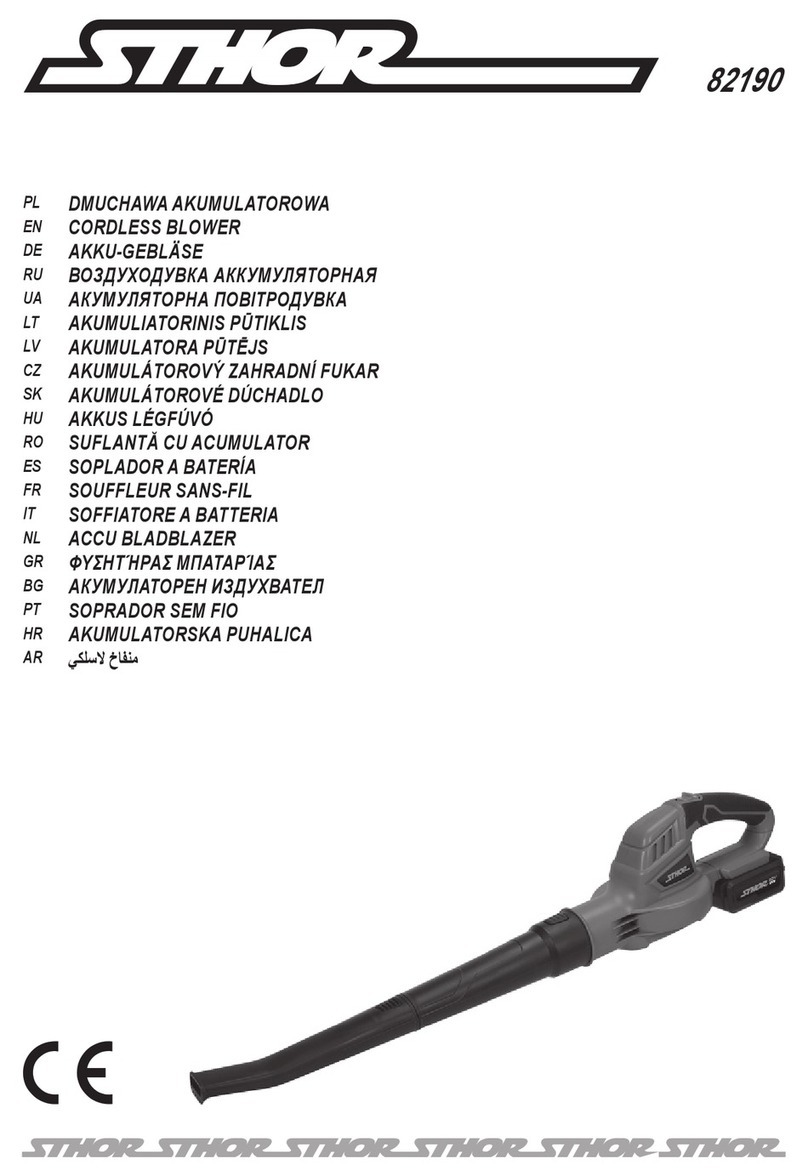Blaupunkt CB2010 User guide

CB2010
Bezprzewodowa dmuchawa do liści
Cordless Leaf Blower
Akumulátorový foukač listí
Akumulátorové dúchadlo na lístie
Akkus lombfúvó
Brezžični puhalnik za listje
Bežična puhalica za lišće
Акумулаторна духалка за листа
Φυσητήρας φύλλων μπαταρίας
Suflantă de frunze fără fir
Belaidis lapų pūstuvas
Juhtmevaba lehepuhur
Bezvadu lapu pūtējs


CB2010
IMPORTANT INFORMATION
To achieve the highest satisfaction, enjoy the product's
performance and learn about all its features and functions,
please read this manual before using the product.
Before using the device, read the Operating Instructions and
comply to its contents. The manufacturer shall not be liable for
any damage caused by the use of the device other than for its
intended purpose or by improper handling.
Keep these Operating Instructions for future reference.
• This device is for domestic use only. Do not use for any other
purposes.
• The device should only be connected to an socket with values
corresponding to the values on the rating label.
• It is necessary to check, if total current consumption of all
devices plugged into the wall outlet does not exceed the fuse
in the circuit.
• If you are using an extension cord, make sure that the total
power consumption of the equipment plugged into the
extension cord does not exceed the extension cord power
rating. Extension cords should be arranged in such a way as
to avoid tripping hazards.
• Do not let cord hang over edge of counter, or touch any hot
surface.
• The device is not designed to be controlled via an external
timer, separate remote control, or other equipment that can
turn the device on automatically.
• Before maintenance work always disconnect the unit from
the power supply.
• When unplugging the power cord from electrical outlet, hold
it by the plug only and remove the plug carefully. Never pull
the cable as it may cause damage to the plug or power cord.
Damage to the power cord or plug can lead to an
electrocution hazard.
• Never leave the product connected to the power source
1

without supervision.
• Never put the power cable, the plug or the whole device into
the water or any other liquids.
• The device should be cleaned regularly complying with the
recommendations described in the section on cleaning and
maintenance.
• Do not place the device near sources of heat, flame, an
electric heating element or a hot oven. Do not place on any
other device.
• This equipment can be used by children aged 8 years and
over under as long as supervision is provided. People with
reduced physical or mental capabilities, as well as people
with no previous experience of using this equipment must be
supervised and made aware of the risks. The instruction
manual should be used as a reference for the safe use of this
equipment. Children should not play with the equipment.
Children without ensured supervision should not be allowed
to perform the cleaning and maintenance of equipment.
• Additional precautions should be taken when using this
device in the presence of children or pets. Do not allow
children to play with the device.
• Never use the product close to combustibles.
• Never expose the product to atmospheric conditions such as
direct sun light or rain, etc... Never use the product in humid
conditions (like bathroom or camping house).
• The power cable should be periodically checked for damage.
If the power cable is damaged the product should be taken to
a professional service location to be fixed or replaced to
prevent any hazards from arising.
• Never use the product with a damaged power cable or if it
was dropped or damaged in any other way or if it does not
work properly. Do not try to repair the defected product by
yourself as it can lead to electric shock. Always return the
damaged device to a professional service in order to repair it.
2
CB2010

All the repairs should only be performed by authorized
service professionals. Any attempted unauthorised repairs
performed can be a hazard to the user.
• Only Original accessories should be used, as well as
accessories recommended by the manufacturer. Using
accessories which are not recommended by the
manufacturer may result in damage of the device and may
render the device unsafe for use.
• Keep your workplace tidy and well lit.
• Disorder and insufficient lighting lead to accidents.
• Do not use power tools in explosive atmospheres, i.e. in the
presence of flammable liquids, gases or dust.
• A moment of carelessness may cause losing control of your
tool.
• If it is possible to fit power tools for dust extraction or
collection, check that they are fitted and working correctly.
Using such power tools reduces the risk posed by the
presence of dust.
• Do not lean out too far when working with your power tool.
Maintain a stable posture and balance. This allows you to
keep better control of your power tool in unforeseen
situations.
• Avoid starting the power tool unintentionally. Make sure the
power switch is in the OFF position before connecting the
power tool to the mains. Carrying a power tool with your f
inger on its trigger or plugging in a power tool after
switching it on can lead to accidents.
• Wear appropriate clothing. Do not work in loose clothing and
do not wear jewellery while working. Keep your hair, clothing
and gloves away from moving parts. The moving parts of a
power tool can catch and pull in loose pieces of clothing,
jewellery or long hair.
• Remove any spanners or tools from the power tool before
starting it. A tool or spanner still connected to the rotating
3
CB2010

part of the power tool may cause personal injury.
• Be careful when working with power tools, concentrate on
your work and use common sense. Do not use a power tool
when tired or under the influence of drugs, alcohol or
medication. Even a moment of carelessness while working
with a power tool can lead to a serious accident.
• Keep children away from the work area and DO NOT allow
children to pull on the power cord - this can cause serious
injury.
• Always place and use the power tool on a stable, level and
horizontal surface.
• Before making any adjustments, changing accessories or
storing the power tool, move the switch to the off position to
disconnect the power tool from the power supply. Such
precautions reduce the risk of accidentally starting the
power tool.
• Check the grinder housing for damage before each use.
• Ensure that the vents are free from debris.
• The device may only be used in a dry, well-lit environment.
• This tool should not be used by anyone under the age of 16.
The device is intended for outdoor use only. Do not use for
other than its intended purpose.
• Only charge the batteries in chargers specified by the
manufacturer. There is a danger of fire if a charger designed
for specific battery types is not used as intended.
• The battery should only be used in the manufacturer’s
equipment. This is the only way to protect the battery from
dangerous overloading.
• Only use the power tool with the correct batteries. The use of
other batteries could cause a risk of personal injury and a fire
hazard.
• The battery can be damaged by sharp objects such as nails or
screwdrivers as well as external forces. The battery may then
short circuit internally and burn out, explode or overheat.
4
CB2010

• When not in use, keep the battery away from metal items such
as paper clips, coins, keys, nails, screws or other small metal
objects that could short-circuit the battery terminals. A short
circuit between the battery terminals can cause burns or a
fire.
• Vapours may occur if the battery is damaged or not used as
intended. The battery may catch fire or explode. Provide
access to fresh air or contact your doctor in the event of any
discomfort. Vapours may irritate the respiratory tract.
• Do not open the battery. Short-circuit hazard.
• Wait until the power tool stops moving before putting it
down. The work tool may jam and lead to a loss of control of
the power tool.
• Storing or using the battery in unsuitable conditions can
cause electrolyte leakage. Avoid contact with the
electrolyte, and flush the skin with water in the event of
accidental contact. Additionally, seek medical advice if the
electrolyte comes into contact with the eyes. Electrolyte
leaking from the battery can cause skin irritation or burns.
• When carrying out work where the tool or clamping
attachment could come into contact with concealed electric
wires, hold the power tool only by insulated surfaces. Contact
of the tool or clamping attachment with a live electrical
conductor may cause voltage to be transmitted to non-
insulated metal parts of the power tool, causing a risk of
electric shock.
• Loss of control of the power tool may result in personal injury.
• Use appropriate detectors to locate the installation or seek
assistance from your local service provider. Contact with live
wires may result in a fire or electric shock.
Charger and battery pack safety instructions
To connect the battery pack for charging, insert the battery
pack into the charger dock and plug the charger to a power
5
CB2010

6
source.
• Keep the charger away from rain and moisture. The charger
may only be used indoors.
• Keep the charger clean.
• Do not operate the charger on readily combustible objects
and surfaces (e.g. paper) or areas with flammable/explosive
atmospheres.
• Always ensure adequate ventilation when charging; fumes or
battery acid can be released from the battery pack if the latter
is compromised by poor handling or damage.
• When charging is complete, unplug the charger from the
power source. Do not leave it connected to a power source for
longer than necessary.
• Store and charge the battery pack in a dry place and make
sure it will not be flooded by water.
• Keep the battery pack terminals clean and free of dirt.
• Protect the battery pack from shocks and moisture; never
open the battery pack or expose it to any damage.
The battery pack charge level can be displayed with the
number of charge indicator LEDs by pressing the state of
charge indicator button on the pack; if required, charge the
battery pack for as long as required to reach the desired charge
level and the expected operating time of the cordless power
tool.
CB2010
SYMBOLS
• The following symbols may appear in the operating instructions or on the tool’s nameplate.
• These signs contain important information about the product and instructions on how to use it.
Read the user manual. Wear protective footwear
The product complies with EC
safety standards
Use ear protection
Wear protective glovesGeneral warning

CB2010
Wear protective clothing
Dispose of the product in
accordance with the WEEE
directive
Wear a protective mask
Contains a lithium-ion
rechargeable battery
Wear safety glasses
The product has double electrical
insulation
Wear a protective helmet
Fire hazard
Wear respiratory protection
Electric shock hazard
7
6. Handle grip
7. Battery charge indicator
8. State of charge indicator button
9. Battery pack latch release buton
Design of the electric leaf blower.
1. Power & speed control switch
2. Lock release button
3. Centre tube
4. End tube
5. Vents
Remove the battery pack by pressing the battery pack latch release button and slide out the pack.
Storage
Store cordless tools in a dry place and out of the reach of
children. For safety concerns, remove the battery pack from the cordless tool before storage. When left
connected to a cordless tool, the battery pack is drained faster. Protect the battery pack and power
tools from frost, high temperatures, moisture and water.
Do not attempt to repair a failed battery pack. Only the original manufacturer or an authorised service
may repair the battery pack.
Recharge the battery packs using only the chargers specified by the manufacturer.
Storage or operation of the battery pack in unsuitable conditions may result in a battery acid leak.
Never attempt to use a damaged or modified battery pack. Damaged or modified battery packs may
cause unpredictable effects during operation, resulting in health hazards. Keep the battery pack away

from open flames and high temperature. If exposed to fire or temperatures above 130°C, the battery
pack may explode.
Installing the battery pack
Tip: Using a battery pack incompatible with the power tool may result in abnormal performance or
failure of the power tool.
Insert the battery pack into the handle until the battery pack latch clicks (the battery pack should be
flush with the receptacle edges on the power tool).
ASSEMBLING THE TOOL
Follow the description and the figure
Assemble the tool by sliding the centre tube in, until the lock release button is engaged.
Next, slide in the end tube until the lock is engaged.
Starting the tool
Turn on the tool by moving the switch (1) to (I).
To choose the higher speed, move the switch (1) to (II).
To turn the tool off, move the switch (1) to (0).
Extreme caution is required near the blower tube mouth, as it may propel debris and other objects with
a high force under the blower air pressure, which may result in injury.
Use the tool only in a dry and well-lit location.
The tool is intended for blowing away leaves, mown grass clippings and other light debris from foot
pavements, driveways, and similar areas.
CB2010
8

9
Technical data:
Voltage: 18 V
No-load speed: 13000 rpm
2 speed settings: 110 km/h; 210 km/h
Battery: 18 V Li-Ion, BP1820 2.0 Ah (not included); BP1840 4.0 Ah recommended (not included)
Dimensions: 92 x 15 x 18.5 cm
Weight:1.2 kg
Noise
Typical A-weighted noise level measured in accordance with En62841:
Sound pressure level (LpA): 75.5 dB (A)
Measurement uncertainty (K): 3.0 dB (A)
Noise level during operation may exceed: 88.26 dB (A).
Wear hearing protection!
Vibrations
Total vibration value measured in accordance with EN 62841:
Vibration emission: ah=3.5 m/s² K=1.5 m/s²
Measurement uncertainty (K): 1,5 m/s²
Weight: 1.2 kg
Permissible Operating Time: 15 minutes of operation, 30 minutes off.
The declared vibrations has been measured according to the standard test method and can be used to
compare tools.
The declared vibrations can also be used in the initial exposure assessment.
CB2010

10
CB2010

WAŻNE INFORMACJE
Aby osiągnąć najwyższą satysfakcje, cieszyć się wydajnością
produktu i poznać jego wszystkie cechy i funkcje, prosimy o
przeczytanie niniejszej instrukcji przed przystąpieniem do
korzystania z tego produktu.
Przed rozpoczęciem użytkowania urządzenia przeczytać
instrukcję obsługi i postępować według wskazówek w niej
zawartych. Producent nie odpowiada za szkody spowodowane
użytkowaniem urządzenia niezgodnie z jego przeznaczeniem
lub niewłaściwą jego obsługą.
Instrukcję obsługi należy zachować, aby można było korzystać
z niej również w trakcie późniejszego użytkowania wyrobu.
• Urządzenie należy podłączyć wyłącznie do gniazdka z
uziemieniem o charakterystyce zgodnej z wartościami na
tabliczce znamionowej.
• Należy sprawdzić, czy całkowity pobór prądu wszystkich
urządzeń podłączonych do gniazdka ściennego nie
przekracza maksymalnego obciążenia bezpiecznika.
• Jeżeli wykorzystywany jest przedłużacz, należy sprawdzić,
czy łączny pobór mocy sprzętu podłączonego do
przedłużacza, nie przekracza parametrów obciążenia
przedłużacza. Przewód przedłużacza należy ułożyć w taki
sposób by uniknąć przypadkowych pociągnięć i potknięcia
się o niego. Upewnij się, że przedłużacz jest z uziemieniem, 3-
żyłowy z gniazdkiem z bolcem uziemiającym.
• Urządzenie nie jest przeznaczone do sterowania za pomocą
zewnętrznego wyłącznika czasowego, osobnego pilota lub
innego sprzętu, który może włączać urządzenie
automatycznie.
• Przed pracami konserwacyjnymi należy zawsze
bezwzględnie odłączyć urządzenie od zasilania. Odłączając
kabel zasilający należy zawsze wyciągać go z gniazdka
trzymając za wtyczkę. Nigdy nie należy wyciągać przewodu
zasilającego ciągnąc za kabel, ponieważ uszkodzeniu może
POLSKI
11
CB2010

ulec wtyczka lub kabel, w skrajnym wypadku może dojść
nawet do śmiertelnego porażenia prądem.
• Nie wolno pozostawiać włączonego urządzenia do gniazdka
bez nadzoru.
• Nie zanurzaj urządzenia w wodzie lub żadnym innym płynie.
• Urządzenie powinno być regularnie czyszczone według
zaleceń opisanych w części o Czyszczeniu i konserwacji
urządzenia.
• Nie umieszczaj urządzenia blisko źródeł ciepła, płomieni,
elektrycznego elementu grzewczego lub na gorącym
piekarniku. Nie umieszczaj na żadnym innym urządzeniu.
• Należy zachować szczególną ostrożność podczas korzystania
z urządzenia, gdy w pobliżu przebywają dzieci lub zwierzęta
domowe.
• Nie należy dopuszczać dzieci do zabawy urządzeniem.
• Nie korzystać z urządzenia w pobliżu materiałów
łatwopalnych.
• Nie wystawiaj urządzenia na działanie warunków
atmosferycznych (deszczu, słońca, etc.) ani nie używaj w
warunkach podwyższonej wilgotności (łazienki, wilgotne
domki kempingowe).
• Okresowo sprawdzaj stan przewodu zasilającego. Jeżeli
przewód zasilający nieodłączalny ulegnie uszkodzeniu, to
powinien on być wymieniony u wytwórcy lub w
specjalistycznym zakładzie naprawczym albo przez
wykwalifikowaną osobę w celu uniknięcia zagrożenia.
• Nie używaj urządzenia z uszkodzonym przewodem
zasilającym, wtyczką lub jeśli zostało upuszczone lub
uszkodzone w jakikolwiek inny sposób lub nieprawidłowo
pracuje. Nie naprawiaj urządzenia samodzielnie, gdyż grozi
to porażeniem. Uszkodzone urządzenie oddaj do właściwego
punktu serwisowego w celu sprawdzenia lub dokonania
naprawy. Wszelkich napraw mogą dokonywać wyłącznie
uprawnione punkty serwisowe. Nieprawidłowo wykonana
naprawa może spowodować poważne zagrożenie dla
12
CB2010

użytkownika.
• Używaj tylko oryginalnych akcesoriów oraz części
zamiennych do urządzenia lub rekomendowanych przez
producenta. Używanie akcesoriów lub części
nierekomendowanych przez producenta może doprowadzić
do uszkodzenia urządzenia oraz zagrozić bezpieczeństwu
użytkowania.
• Dbaj o porządek i dobre oświetlenie w miejscu pracy.
• Nieporządek i niewystarczające oświetlenie prowadzą do
wypadków.
• Nie używaj elektronarzędzi w przestrzeniach zagrożonych
wybuchem, tj. w obecności łatwopalnych cieczy, gazów lub
pyłów.
• Chwila nieuwagi grozi utratą panowania nad narzędziem.
• Jeżeli istnieje możliwość zamontowania elektronarzędzi do
odprowadzania lub zbierania pyłu, sprawdź, czy zostały one
zamocowane i działają prawidłowo. Używanie takich
elektronarzędzi zmniejsza zagrożenie stwarzane przez
obecność kurzu.
• Nie wychylaj się z elektronarzędziem zbyt daleko. Utrzymuj
stabilną postawę i równowagę. Dzięki temu zachowasz
lepszą kontrolę nad elektronarzędziem w nieprzewidzianych
sytuacjach.
• Unikaj niezamierzonego uruchomiania elektronarzędzia.
Przed podłączeniem elektronarzędzia do sieci elektrycznej
sprawdź, czy wyłącznik zasilania znajduje się w położeniu
wyłączonym (OFF). Przenoszenie elektronarzędzia z palcem
na spuście lub podłączanie elektronarzędzia do sieci już po
włączeniu może prowadzić do wypadków.
• Zakładaj odpowiednią odzież. Nie pracuj w luźnym ubraniu i
nie noś biżuterii podczas pracy. Włosy, odzież i rękawice
trzymać z dala od ruchomych części. Ruchome części
elektronarzędzia mogą pochwycić i wciągnąć luźne części
odzieży, biżuterię lub długie włosy.
• Przed uruchomieniem elektronarzędzia wyjmij z niego
POLSKI
13
CB2010

wszystkie klucze lub narzędzia. Narzędzie lub klucz nadal
połączony z częścią obrotową elektronarzędzia może
spowodować obrażenia ciała.
• Podczas pracy z elektronarzędziami zachowuj ostrożność,
skoncentruj się na pracy i stosuj zdrowy rozsądek. Nie używaj
elektronarzędzia w razie zmęczenia lub pod wpływem
środków odurzających, alkoholu lub leków. Nawet chwila
nieuwagi podczas pracy z elektronarzędziem grozi
poważnym wypadkiem.
• Trzymaj dzieci z dala od miejsca wykonywania pracy i NIE
pozwalaj dzieciom na pociąganie za kabel zasilający – może
to spowodować poważne obrażenia.
• Zawsze umieszczaj i używaj elektronarzędzia na stabilnej,
równej i poziomej powierzchni.
• Przed dokonaniem jakichkolwiek regulacji, wymianą
akcesoriów lub odstawieniem elektronarzędzia do
przechowania przestaw wyłącznik do położenia wyłączenia,
aby odłączyć elektronarzędzie od zasilania. Takie działania
zapobiegawcze zmniejszają ryzyko przypadkowego
uruchomienia elektronarzędzia.
• Przed każdym użyciem sprawdzić obudowę pod kątem
uszkodzeń.
• Upewnij się, że otwory wentylacyjne są wolne od osadów.
• Z urządzenia można korzystać wyłącznie w suchym, dobrze
oświetlonym otoczeniu.
• Z tego narzędzia nie powinny korzystać osoby poniżej 16
roku życia.
• Urządzenie służy wyłącznie do użytku na zewnątrz. Nie
używać do innych celów, niezgodnych z jego
przeznaczeniem.
• Akumulatory należy ładować tylko w ładowarkach o
parametrach określonych przez producenta. W przypadku
użycia ładowarki, przystosowanej do ładowania określonego
rodzaju akumulatorów, w sposób niezgodny z
przeznaczeniem, istnieje niebezpieczeństwo pożaru.
14
CB2010

• Akumulator należy stosować wyłącznie w urządzeniach
producenta. Tylko w ten sposób można ochronić akumulator
przed niebezpiecznym dla niego przeciążeniem.
• Elektronarzędzi należy używać wyłącznie z przeznaczonymi
do nich akumulatorami. Użycie innych akumulatorów może
stwarzać ryzyko odniesienia obrażeń ciała i zagrożenie
pożarem.
• Ostre przedmioty, takie jak gwoździe lub śrubokręt, a także
działanie sił zewnętrznych mogą spowodować uszkodzenie
akumulatora. Może wówczas dojść do zwarcia
wewnętrznego akumulatora i do jego przepalenia, eksplozji
lub przegrzania.
• Nieużywany akumulator należy przechowywać z dala od
metalowych elementów, takich jak spinacze, monety, klucze,
gwoździe, śruby lub inne małe przedmioty metalowe, które
mogłyby spowodować zwarcie styków akumulatora. Zwarcie
pomiędzy stykami akumulatora może spowodować
oparzenia lub pożar.
• W razie uszkodzenia akumulatora lub stosowania go
niezgodnie z przeznaczeniem może dojść do wystąpienia
oparów. Akumulator może się zapalić lub wybuchnąć. Należy
zadbać o dopływ świeżego powietrza, a w przypadku
wystąpienia dolegliwości skontaktować się z lekarzem.
Opary mogą podrażnić drogi oddechowe.
• Nie otwierać akumulatora. Istnieje niebezpieczeństwo
zwarcia.
• Przed odłożeniem elektronarzędzia należy poczekać, aż
znajdzie się ono w bezruchu. Narzędzie robocze może się
zablokować i doprowadzić do utraty kontroli nad
elektronarzędziem.
• Przechowywanie lub użytkowanie akumulatora w nie-
odpowiednich warunkach może spowodować wyciek
elektrolitu. Należy unikać kontaktu z elektrolitem, a w razie
przypadkowego kontaktu, przepłukać skórę wodą. W
przypadku dostania się elektrolitu do oczu, na-leży
POLSKI
15
CB2010

dodatkowo zasięgnąć porady lekarza. Elektrolit wyciekający
z akumulatora może spowodować podrażnienia skóry lub
oparzenia.
• Podczas wykonywania prac, przy których narzędzie lub
element mocujący mogłyby natrafić na ukryte przewody
elektryczne, elektronarzędzie należy trzymać wyłącznie za
izolowane powierzchnie. Kontakt narzędzia lub elementu
mocującego z przewodem elektrycznym pod napięciem
może spowodować przekazanie napięcia na nieizolowane
części metalowe elektronarzędzia, grożąc porażeniem
prądem elektrycznym.
• Utrata kontroli nad elektronarzędziem może spowodować
obrażenia ciała.
• Należy używać odpowiednich detektorów w celu
zlokalizowania instalacji lub zwrócić się o pomoc do
lokalnego dostawcy usługi. Kontakt z przewodami
znajdującymi się pod napięciem może doprowadzić do
powstania pożaru lub porażenia elektrycznego.
Instrukcje dotyczące bezpieczeństwa ładowarki i
akumulatora
Aby podłączyć akumulator do ładowania należy go wsunąć w
ładowarkę, a następnie ładowarkę podłączyć do źródła
zasilania.
• Chroń ładowarkę przed deszczem i wilgocią. Ładowarka może
być używana wyłącznie w pomieszczeniach.
• Utrzymuj ładowarkę w czystości.
• Nie używaj ładowarki na łatwopalnych przedmiotach i
podłożach (np. papierze) ani w środowiska z atmosferą
wybuchową i/lub łatwopalną.
• Zawsze zapewniaj odpowiednią wentylację podczas
ładowania, ponieważ opary lub elektrolit mogą wyciekać z
akumulatora, jeśli akumulator jest uszkodzony w wyniku
niewłaściwego obchodzenia się z nim/uszkodzenia.
16
CB2010

• Po zakończeniu ładowania odłącz ładowarkę od gniazdka
ściennego. nie pozostawiaj go podłączonego do źródła
zasilania dłużej niż to konieczne.
• Przechowuj i ładuj akumulator w suchym miejscu i upewnij
się, że nie dostanie się do niego woda.
• Utrzymuj złącza baterii w czystości i wolne od zabrudzeń.
• Chroń akumulator przed wstrząsami, wilgocią i nigdy nie
otwieraj ani nie uszkadzaj mechanicznie akumulatora.
Aby sprawdzić poziom naładowania akumulatora, należy
nacisnąć przycisk na akumulatorze i w razie potrzeby
naładować akumulator zgodnie z liczbą diod LED i
przewidywanym czasem pracy narzędzia bezprzewodowego.
SYMBOLS
• W instrukcji obsługi lub na tabliczce znamionowej narzędzia mogą pojawić się poniższe symbole.
• Te oznaczenia zawierają ważne informacje na temat produktu i wskazówki dotyczące sposobu jego
użytkowania.
CB2010
17
POLSKI
Przeczytaj podręcznik użytkownika. Zakładaj obuwie ochronne
Produkt spełnia wymagania norm
bezpieczeństwa WE
Stosuj ochronę uszu
Zakładaj rękawice ochronneOstrzeżenie ogólne
Zakładaj odzież ochronną
Utylizuj produkt zgodnie z
przepisami dyrektywy WEEE
Zakładaj maskę ochronną
Zawiera akumulator litowo-jonowy
Zakładaj okulary ochronne
Produkt ma podwójną izolację elek-
tryczną
Zakładaj kask ochronny
Niebezpieczeństwo pożaru
Stosuj ochronę dróg oddechowych
Niebezpieczeństwo porażenia
prądem

CB2010
18
Przechowywanie
Ÿ Narzędzia bezprzewodowe należy przechowywać w suchym miejscu niedostępnym dla dzieci.
Zewzględów bezpieczeństwa należy wyjąć akumulator przed odłożeniem narzędzia
bezprzewodowego. Gdy akumulator jest włożony do narzędzia bezprzewodowego, rozładowuje się
szybciej. Należy chronić akumulator i narzędzia przed mrozem, wysokimi temperaturami, wilgocią i
wodą.
Ÿ Nie wolno naprawiać uszkodzonego akumulatora. Naprawy akumulatora można dokonywać u
producenta lub w autoryzowanym punkcie serwisowym.
Ÿ Akumulatory należy ładować tylko w ładowarkach o parametrach podanych przez producenta
Ÿ Przechowywanie lub użytkowanie akumulatora w nieodpowiednich warunkach może spowodować
wyciek elektrolitu. Nie wolno używać uszkodzonych ani modyfikowanych akumulatorów.
Uszkodzone lub zmodyfikowane akumulatory mogą zachowywać się w sposób nieprzewidywalny,
powodując niebezpieczne dla zdrowia skutki. Akumulator należy trzymać z dala od ognia oraz
chronić
Ÿ przed wysoką temperaturą. Wskutek działania ognia lub temperatury przekraczającej 130°C
akumulator może eksplodować.
6. rękojeść
7. Kratka wentylacyjna
8.Przycisk sprawdzający stan naładowania
akumulatora
9.Przycisk zwalniając blokadę akumulatora
Projekt elektrycznej dmuchawy liści.
1. przełącznik regulacji prędkości, włącznik/wyłącznik
2. przyciska zwalniający blokadę
3. rura środkowa
4. rura końcowa
5. kratki wentylacyjne
Aby wyjąć akumulator z urządzenia należy użyć przycisku blokady akumulatora a następnie wysunąć
go z urządzenia.
Table of contents
Languages:
Other Blaupunkt Blower manuals
Popular Blower manuals by other brands
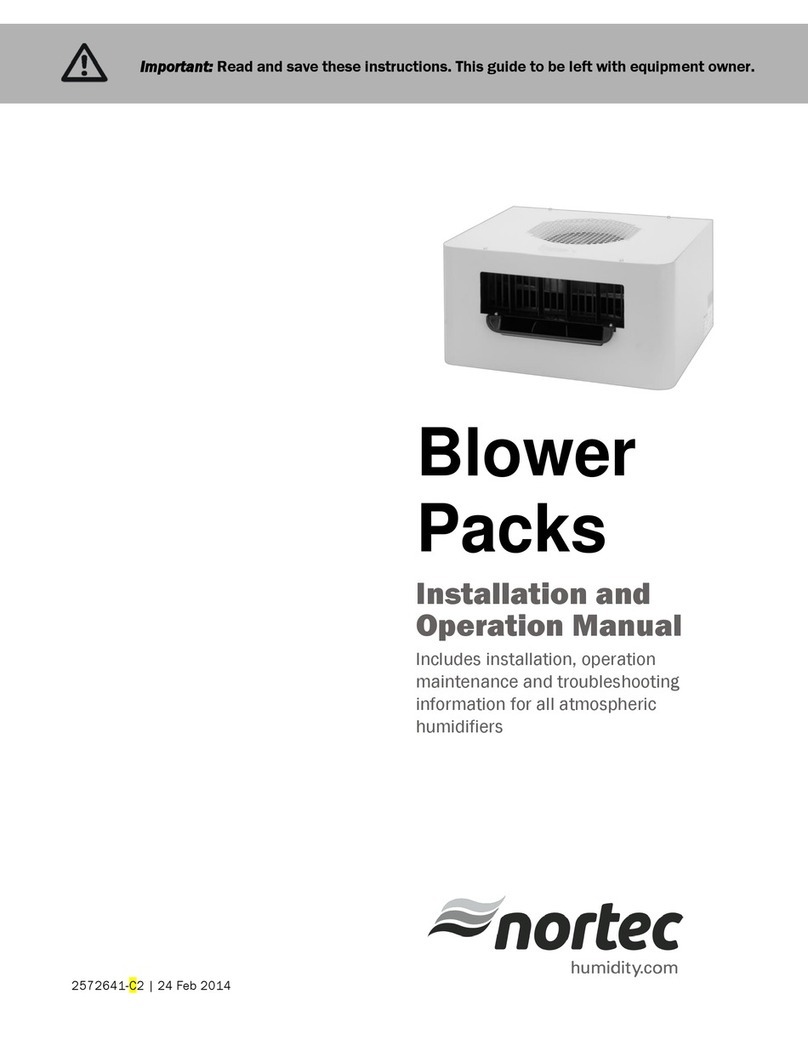
nor-tec
nor-tec NH-EL Installation and operation manual

EarthWise
EarthWise LB20058 Operator's manual

VALERII S & M GROUP
VALERII S & M GROUP PREMIUM-HD 0503JSCB15A Original instruction manual
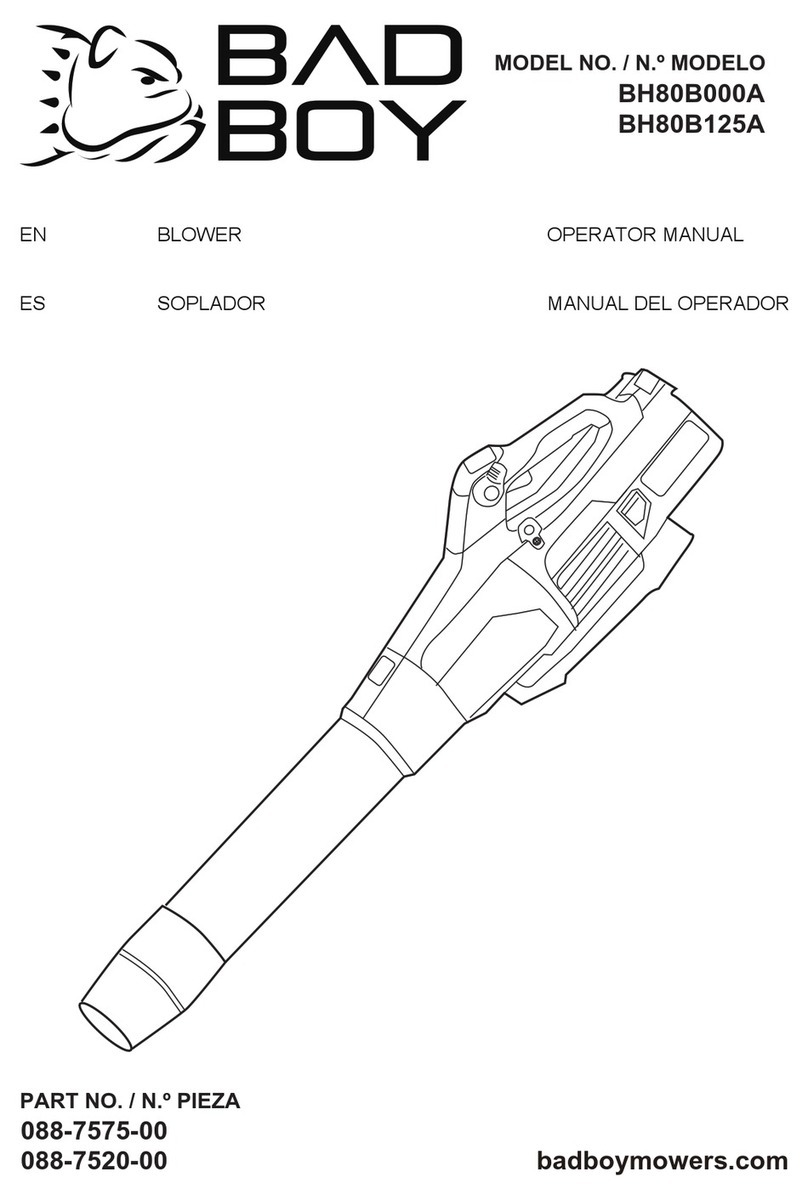
Bad Boy
Bad Boy BH80B000A Operator's manual
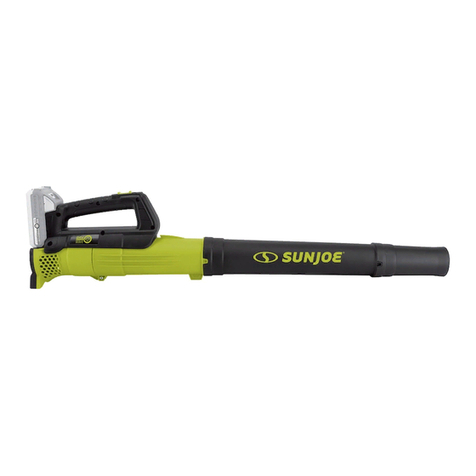
sunjoe
sunjoe 24V-TB-LTE Operator's manual
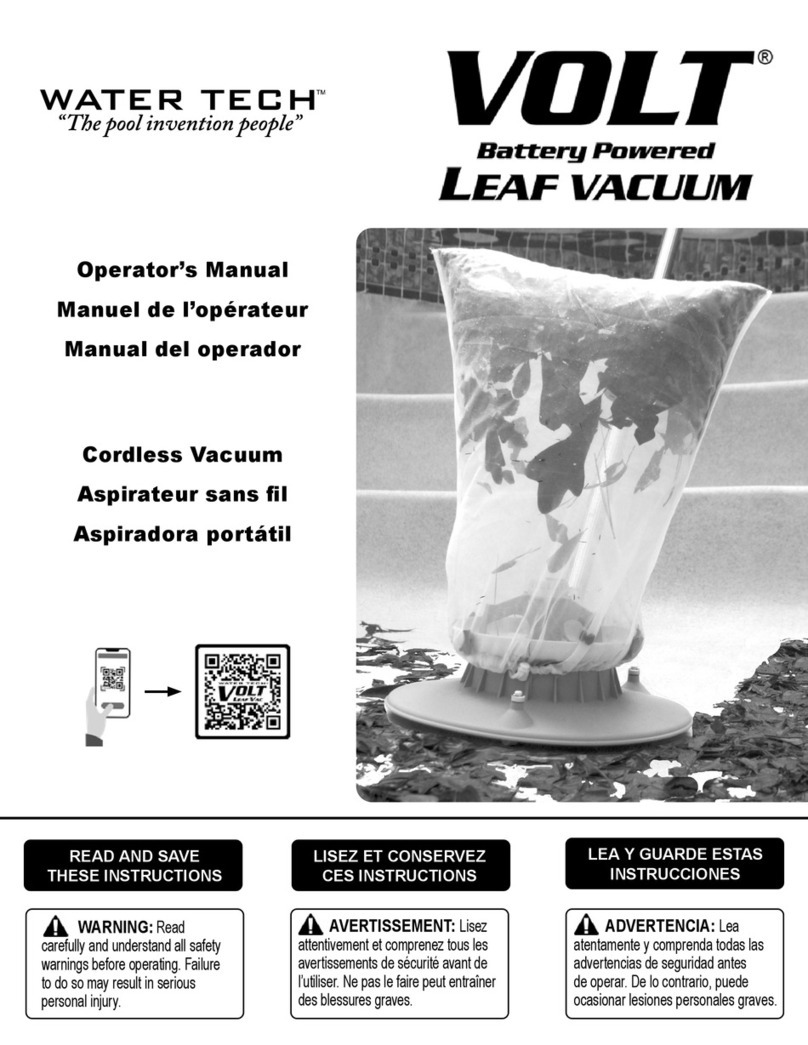
WaterTech
WaterTech Volt 11A0060 Operator's manual
